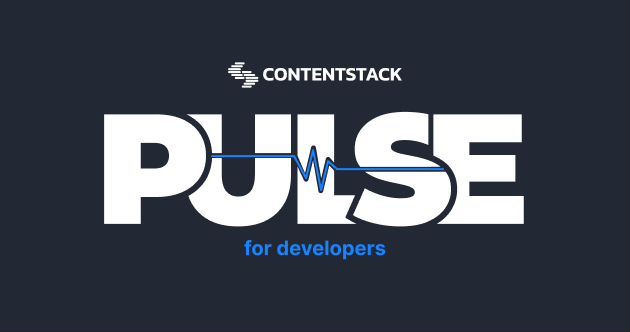How Contentstack Visual Builder changed my approach to no code

Contentstack Visual Builder completely changed how I see no-code, no longer just drag-and-drop, but structured, developer-governed, and safe to experiment with. It helps build real, reusable pages hands-on while respecting content models and workflows. I didn’t just edit content, I learned to think like a content architect.
When I first heard about Visual Builder at Contentstack, I gave it the kind of smile you reserve for polite interest. As a technical product marketer still finding my footing, I was curious but also cautious. I’ve seen my fair share of no-code tools. Most of them either overpromise and underdeliver, or they flatten everything into a drag-and-drop playground with no appreciation for the structure that makes great content scalable.
But I was wrong. Visual Builder didn’t just prove useful. It reshaped how I think about no-code tools entirely.
The skeptic at the door
I’ll be honest, part of me assumed Visual Builder was “just another editor”. I imagined a WYSIWYG interface slapped on top of the CMS, maybe good for minor edits, maybe good for marketers who didn’t want to deal with backend logic. But as someone who works between the lines of product, content, and technical systems, I’ve seen how dangerous that can be. Structure matters. Governance matters. If a tool doesn’t respect the architecture behind content, it becomes more of a liability than an asset.
So I decided to put Visual Builder to the test, not by reading docs or sitting through a polished demo, but by getting my hands dirty.
Where simplicity meets structure
I logged into Contentstack, selected a landing page entry, and opened it in Visual Builder. My first thought? This is… calming.
The interface wasn’t screaming at me with toolbars or widgets. It was elegant, simple in a way that clearly didn’t mean "limited.” The left panel gave me access to content blocks I could drag onto the page, while the main canvas showed a live preview of the experience. But what made me pause was the immediate sense that everything here was tied to real content models, not just visual fluff.
I dragged in a “text and image” block, typed in a headline, selected an asset, and hit preview. No errors. No friction. But here’s where it got interesting: I wasn’t just decorating the page, I was filling a structured content schema designed by developers.
Image 1: A newly added block in Visual Builder, with fields open and preview pane visible.
And that’s when it hit me: this was my first real aha moment.
I wasn’t just editing a page. I was working within a system designed for consistency, scalability, and reusability and I didn’t need to know code to do it.
When no-code feels like collaboration
As I built out the page, adding testimonials via references, tweaking copy, reordering content blocks; I began to appreciate the design philosophy behind Visual Builder. It didn’t flatten the content architecture; it elevated it. The blocks I was moving around weren’t fragile HTML snippets. They were backed by structured content entries, validated and managed just like any other part of the CMS.
This is where Visual Builder distinguishes itself. It’s not a replacement for developers. It’s a respectful handshake.
Developers define the boundaries: what types of content exist, what fields they require, how components behave. As a marketer, I get to work inside those boundaries, creatively but responsibly. And the best part? That freedom actually made me more curious about the underlying architecture. I found myself exploring content models, understanding references and nesting, not because I had to, but because I wanted to optimize what I was building.
Infographic 1: How content models power components and come together in page assembly.
The freedom wasn't reckless, it was intentional. And that made all the difference.
Previewing without fear
There’s something uniquely empowering about making changes and seeing them reflected immediately, without the stress of publishing. Visual Builder let me preview every edit, from small copy tweaks to layout adjustments, in real time.
For someone who’s used to triple-checking whether a change has gone live or impacted other environments, this was surprisingly freeing. I didn’t need to hop into a staging branch or file a ticket to test an idea. I could iterate on the fly. I could move faster, smarter.
And yet, the tool never let me feel like I was flying blind. Every block I interacted with clearly linked back to its content type. Every edit felt safe. Thoughtful. Scalable.
That’s not something you can fake with design polish. That’s the result of a system built with real-world collaboration in mind.
Hitting a wall, but learning from it
Of course, not everything was drag-and-drop magic. At one point, I tried to adjust the spacing between two blocks to tighten the layout. I quickly realized that this level of control wasn’t available to me. My initial reaction was frustration, but it quickly turned into respect.
This wasn’t a limitation. It was a guardrail.
Developers defined the layout components to ensure visual consistency across pages. By keeping that power on their side of the fence, the system protects brand integrity while still letting me get creative within the allowed framework.
It was a small moment, but it taught me something big: No-code doesn’t mean no thinking. It means working smart within the rules.
Seeing myself differently as a marketer
Using Visual Builder didn’t just help me ship a better page; it also helped me see my role in a new light.
I wasn’t just a content creator anymore. I was a content architect.
I now understand what structured content feels like, not just what it is in theory. I know what it’s like to build modular, reusable blocks and how that benefits long-term scalability. I speak more confidently with developers because I can reference components and schemas with clarity, not guesswork. And I collaborate better with designers because I can prototype experiences, not just describe them.
Image 2: A complex page built in Visual Builder with nested references
And maybe the most surprising outcome? I started telling better stories.
By controlling not just the message but the medium—how content appears, flows, and interacts, I was able to think more holistically about the user journey. Visual Builder didn’t just empower me to build pages. It helped me design narratives.
Where do I want to go next?
My experience with Visual Builder has opened up new curiosity tunnels I didn’t expect.
I want to explore how localization behaves inside the visual interface. Can I preview a page in French with the same flow? How does the approval workflow play out when multiple teams are involved? What about more advanced integrations or dynamic content rules? Can I personalize a block for returning users? And where do workflows fit into all of this?
The best part is I don’t feel like these are questions I need to wait for someone else to answer. I feel capable of testing them myself.
That’s what good tooling does. It opens doors, not just windows.
So, did Visual Builder change my mind?
Yes. And not because it was flashy or novel, but because it was thoughtful.
Visual Builder changed how I think about no-code. It is not a compromise but a bridge. It is not a way to “move fast and break things,” but a way to move smart and build well.
If you’re a technical marketer like me, someone who lives at the intersection of UX, content, and systems, I urge you to try Visual Builder. Not to replace developers, but to partner better with them. Not to do more with less, but to do better with what you already have.
Because no-code, when done right, doesn’t remove complexity. It just gives you the right lens to manage it.
If you’ve had a “no-code aha moment” like this or if you’re still skeptical, I’d love to hear your take.
Would you give Visual Builder a spin? What would you build first?
TL;DR
Four aha moments that shifted my mindset
Before I take you through what I did, let me give you a preview of what clicked for me while working hands-on with Contentstack Visual Builder:
No-code ≠ no control: I wasn’t just dragging blocks around, I was working directly with structured, reusable content.
Live edits, no fear: I could test and preview changes instantly without breaking anything or waiting on staging environments.
Developer-friendly guardrails: Devs define the models and components, but I get full creative control within them.
I became a better storyteller: Visual Builder helped me understand how content structure and visual hierarchy work together.
About Contentstack
The Contentstack team comprises highly skilled professionals specializing in product marketing, customer acquisition and retention, and digital marketing strategy. With extensive experience holding senior positions at renowned technology companies across Fortune 500, mid-size, and start-up sectors, our team offers impactful solutions based on diverse backgrounds and extensive industry knowledge.
Contentstack is on a mission to deliver the world’s best digital experiences through a fusion of cutting-edge content management, customer data, personalization, and AI technology. Iconic brands, such as AirFrance KLM, ASICS, Burberry, Mattel, Mitsubishi, and Walmart, depend on the platform to rise above the noise in today's crowded digital markets and gain their competitive edge.
In January 2025, Contentstack proudly secured its first-ever position as a Visionary in the 2025 Gartner® Magic Quadrant™ for Digital Experience Platforms (DXP). Further solidifying its prominent standing, Contentstack was recognized as a Leader in the Forrester Research, Inc. March 2025 report, “The Forrester Wave™: Content Management Systems (CMS), Q1 2025.” Contentstack was the only pure headless provider named as a Leader in the report, which evaluated 13 top CMS providers on 19 criteria for current offering and strategy.
Follow Contentstack on LinkedIn.






